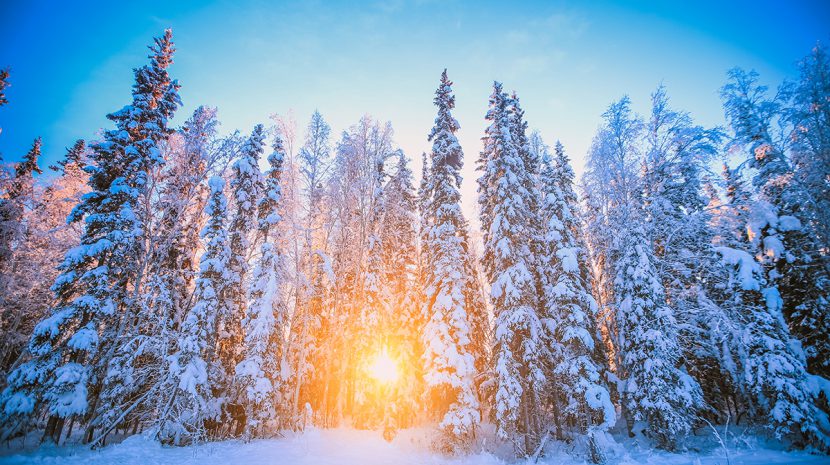Alaska’s winter solstice explained
Back To Blog
Is Alaska dark all the time? Or light all the time? These are a few questions Alaska locals are pretty used to hearing. With winter solstice just days away, we’re here to give you a little solstice 101 so you’re in the know.
Why does it happen?
As our planet travels around the sun, it’s tilted at about 23.5 degrees. This is the reason we experience an unequal amount of sunlight in the northern vs. the southern hemispheres. This tilt causes both the summer and winter solstices, as well as the seasons we all experience at different points across the globe.
Every point on the globe experiences the two solstices at some level. Your distance from the equator will determine just how much daylight you lose as you approach the shortest day of the year, Dec. 21. Since Alaska is so far north, we experience an exaggerated version of solstice – this is why people are sometimes led to believe that it is always dark, or always light.
Just how dark does it get?
In reality, much of Alaska still experiences at least a few hours of sunlight, even on the shortest days. Alaska is a large state and depending on where you are, the winter solstice experience can be dramatically different. In Barrow, the northernmost place in Alaska, there are 67 days of darkness. But in Fairbanks, right in the middle of the Interior, there are almost four hours of daylight on solstice. Further south, cities like Anchorage in Southcentral and Juneau in Southeast get between five and six-and-a-half hours of daylight (for context, Seattle receives about eight-and-a-half hours of daylight on winter solstice).
After solstice, the daylight starts to return, and it comes back fast. Visitors in Juneau and Anchorage can expect to gain between five and six minutes of daylight a day, and in Barrow the light comes back at a rate of nine minutes a day.
If you’re planning on traveling to Alaska around the time of solstice, check to see if there are any activities in your area commemorating the shortest day of the year. And if winter solstice doesn’t sound like your cup of tea, we bet you’ll love visiting in June when summer solstice celebrations abound for the longest day of the year.